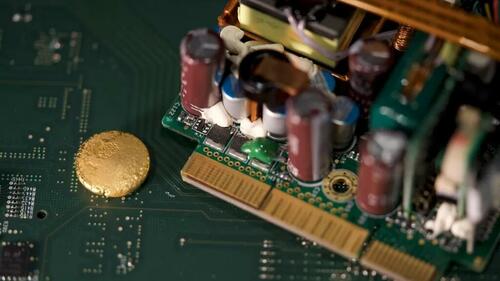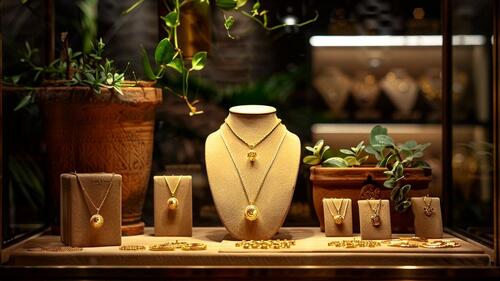
The UK’s Ploy To Pull Their Gold From The Wastebasket
Via SchiffGold.com,
While the topic of conservation has grown in prominence over the past few decades, it sometimes takes forms that would not be commonly thought of as “conservation.” The British Government has melded a desire for conservation with the love of mammon, using recent scientific breakthroughs. Gold will be lost at a much slower rate, as its largest industrial use will no longer mean sure destruction for the precious metal. A plant has opened up where modern prospectors will hunt for gold in used electronics using a targeted chemical process.
A small town in South Wales, with a beautiful name that rolls off the tongue, “Llantrisant” will serve as home to the ingenious factory. The factory has enough capacity to process over 4000 tons of circuit boards each year. They source the circuit boards from another processing plant that takes in e-waste from across the British Isles. A Canadian process is used by the Mint to extract gold from these circuit boards. It is a low energy process that occurs at room temperature, meaning it can be performed without special facilities. The circuit boards enter the facility, and the parts containing gold are deftly separated from the rest of the disposable circuit boards. The parts containing gold are then brought to a chemical plant within the facility, where they are bathed in a solution that leeches out the gold from the e-waste chunks. The solution is then dried in a furnace to be reduced to pure gold. Traditional smelting techniques or toxic chemical processes are no longer necessary with this new one-size-fits-all all gold extraction process.
The Canadian firm Excir originally created the patented chemical technology, and have made this process available to mints and private companies across the world. This technology has made conservation an ever present possibility in a world full of electronic devices. Not only does this technology ease the strain on gold miners, it is also quite lucrative. According to BBC News, “Four thousand tonnes of e-waste should generate up to 450kg of gold, which is worth about £27m at current prices. Small businesses and government agencies around the world could take advantage of the Gold found through this process to either resale or find creative uses for Gold. This process links gold directly to the life of modern communities in a fundamentally yet extremely everyday way.

The high profit margins of this processing could pave a way for a new era of trash disposal. The facilities surrounding one of these gold extractors could be set up to efficiently extract far more resources from other trash that is needlessly thrown away. Unbounded creation of trash and slovenly disposal of it uses up millions of acres and loses billions of dollars of resources. The literal presence of gold in trash is a much needed catalyst that can allow communities to take their waste disposal more seriously. Scientific research targeted towards creating new disposal strategies can speed up this process of resource stewardship. The recreation of the materials found in the trash could be a cause for community craftsmanship to arise. Metal and plastic could be given back or auctioned off to those in the community involved in construction or even local industry.
While there are countless potential uses for this gold in theory, the Royal Mint has already announced that it plans to use the reclaimed gold for its own line of jewelry.

886 jewelry has been in operation since 2022, and it sells “high-end rings, necklaces and earrings online and from its boutique in Burlington Arcade, in Mayfair, central London.”
While the Mint has stated plans to create coins once the plant creates more gold, this use of gold is a clever way to appeal to both aesthetic and moral sensibilities. A great amount of guilt has been associated with jewelry, spearheaded by immoral diamond mining practices in Africa. However, 100% recycled gold not only undoes that stigma for consumers, but also associates a wave of pure positive emotion with the acquisition. They are directly promoting conservation and careful resource management, but the fact that an entire brand of jewelry is marketed as such amplifies this effect and increase the Royal Mint’s profit margin in comparison to if they just created bullion.
From governmental entrepreneurship to the pricing effects of conservation, this recent innovation highlights all areas of this intriguing and multivariable world. While the conditions and incentives that drive human action are always changing, the role of gold in civic and private life is ever present.
Tyler Durden
Mon, 08/12/2024 – 03:30











![Mikołajki w Kłodzku. Mundurowi z sercem [zdjęcia]](https://storage.googleapis.com/intergol-pbem/klodzko24/articles/image/f76c6316-8b85-4c75-ad32-60457481fc0b)




